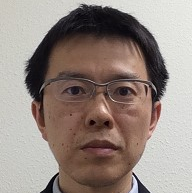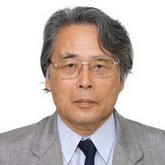Flocculation and Electrokinetics in Bioresources and Environment: Related to Gels
A special issue of Gels (ISSN 2310-2861). This special issue belongs to the section "Gel Processing and Engineering".
Deadline for manuscript submissions: 30 June 2024 | Viewed by 3443
Special Issue Editors
Interests: polymer chemistry; polyelectrolyte; microgel; polymer complex; stimuli-responsive gel or polymer
Interests: flocculation and coagulation of colloidal suspensions; particle gel
Interests: electrophoresis; electrokinetics; electrokinetic phenomena; electrostatic interaction of colloidal particles; gel electrophoresis; electrokinetics of gel-like particles
Special Issue Information
Dear Colleagues,
Interfacial electrokinetic phenomena and flocculation in biological resources and the environment have been central issues in the activities of the Electrokinetic Society of Japan (ELKINJP) and the Research Unit for Colloidal Engineering in Bio-resources (at University of Tsukuba) (RUCEB) since their establishment in 2011. The focus on flocculation has led to an understanding of the kinetics of colloidal interfaces and their relationship with a wide range of biological resources and environmental applications. The interfacial electrokinetic phenomena, especially zeta potential, can be sensitively understood and controlled. The colloids targeted here are complex gels of clay, organic particles, polymers, surfactants, and other materials. One example can be found in soil and water treatment sludge. On the basis of this background, we decided to collaborate with the session “Bio-flocculation and Smart Sludge for Soil Improvement (BSSI)” at TGSW2022 held by the University of Tsukuba and to publish a Special Issue of Gels (an open access journal from MDPI). BSSI is an important issue in agriculture and water treatment, but this Special Issue is open to manuscripts on topics ranging from basic to applied flocculation and electrokinetics in bioresources and the environment. We welcome submissions from authors who did present at the TGSW2022 session, as long as they agree with the objectives of the activities of the ELKINJP and RUCEB. The deadline for submission of manuscripts is 30 June 2024. Ten papers will be selected from the submissions as invited papers, and the Article Processing Charges for these submissions will be waived. Other papers will be treated as general papers in accordance with MDPI rules. For the latter, Article Processing Charges (2600 CHF, https://0-www-mdpi-com.brum.beds.ac.uk/journal/gels/apc) will be required. Invited papers will be selected by the Editorial Board at the end of June 2024.
Dr. Kazuyoshi Ogawa
Prof. Dr. Yasuhisa Adachi
Prof. Dr. Hiroyuki Ohshima
Guest Editors
Manuscript Submission Information
Manuscripts should be submitted online at www.mdpi.com by registering and logging in to this website. Once you are registered, click here to go to the submission form. Manuscripts can be submitted until the deadline. All submissions that pass pre-check are peer-reviewed. Accepted papers will be published continuously in the journal (as soon as accepted) and will be listed together on the special issue website. Research articles, review articles as well as short communications are invited. For planned papers, a title and short abstract (about 100 words) can be sent to the Editorial Office for announcement on this website.
Submitted manuscripts should not have been published previously, nor be under consideration for publication elsewhere (except conference proceedings papers). All manuscripts are thoroughly refereed through a single-blind peer-review process. A guide for authors and other relevant information for submission of manuscripts is available on the Instructions for Authors page. Gels is an international peer-reviewed open access monthly journal published by MDPI.
Please visit the Instructions for Authors page before submitting a manuscript. The Article Processing Charge (APC) for publication in this open access journal is 2600 CHF (Swiss Francs). Submitted papers should be well formatted and use good English. Authors may use MDPI's English editing service prior to publication or during author revisions.
Keywords
- flocculation
- aggregation
- colloids
- gels
- sludge
- granules
- electrokinetics
- bioresources
- soil improvement
- water treatment








